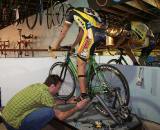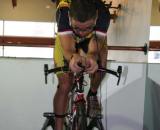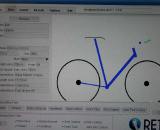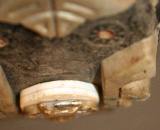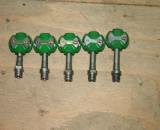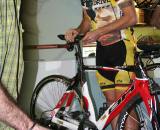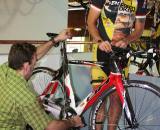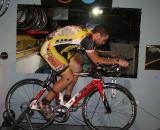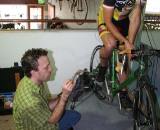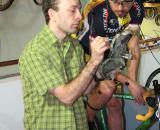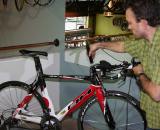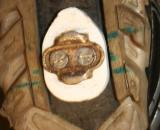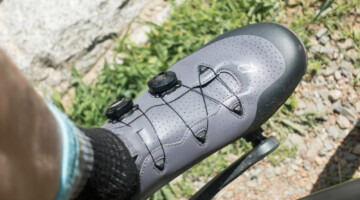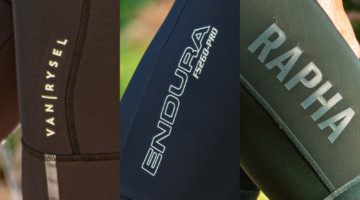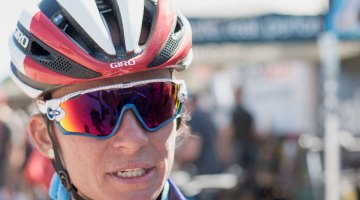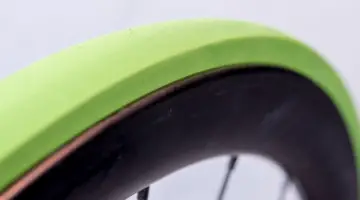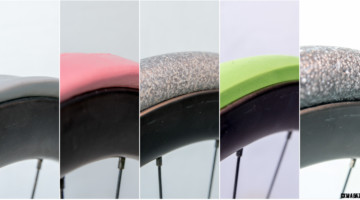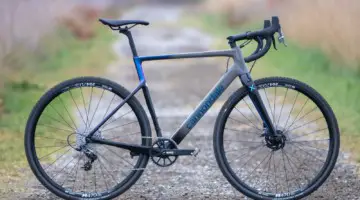In the first part of this article, Josh introduced the high-tech Retül bike fitting process he experienced in Portland’s Cyclepath bike shop. Here, he takes a look at moving that data over to other bikes, including his ‘cross bike, and weighs the pros and cons of getting a Retül bike fit.
Multiple Bikes, Art and Science
While the Retül process isn’t cheap – $250 is the going rate – Bill Larson works hard to get his customers good value. “Retül University says a fit should take an hour and a half,” said Larson. “They get you into the median ranges, but they don’t really emphasize explaining the data to the customers or walking them through how all of the numbers interrelate. I feel that $250 is a good amount of money, and I want to give people good bang for the buck. The Retül system is extremely expensive, in the neighborhood of $15,000, so there’s definitely a cost of investment that you need to recoup.”
Larson did a great job of going through all of the data (and there’s a LOT of it) and explaining how it all interrelates, what are good goals for position, and sharing past fit anecdotes. He’ll also run through as many bikes as he possibly can in the allotted time, with perhaps a road and TT bike, or road and ‘cross bike constituting a typical session.
Other than the specific saddle fore/aft position for time trialing, the main adjustments between those three setups is in the upper body – once the ideal for lower body angles is established, it carries over between bikes. Of course shoes, pedals and saddles are all likely to change, so a quick run-through can help to nail those down.
“On your cyclocross bike, it’s the same saddle height, based on extension and flexion of the legs for a good, fluid, round pedal stroke for the best power. Plumb bob and saddle fore and aft position is going to be the same,” said Larson. “It’s really the upper body fit that changes. Usually a ‘cross bike is going to be fit shorter than a road bike, which will raise your back up a little higher and give you more upper body strength for more aggressive off-road sections or even bunny-hopping barriers. For example, a mountain bike has a standard back angle of about 50 degrees, while a road bike is 45. When you’re stretched out really far, you can’t get the leverage to lift over obstacles or get good control in muddy corners. It’s a higher center of gravity, but you also have more force to push in and drive the tires into the ground on technical sections and get around slippery corners better.”
Numbers from the Body and Bikes
At the end of the process, there’s a list of numbers representing the ideal body position and angles as well as a digital assessment of the bike. Using a wand with four LEDs, Larson snaps digital shots of key points of the bike to develop a bike profile, then the computer spits out all of the fit information of that bike. “You get a body fit per bike as well as a bike fit, once it’s all been adapted,” said Larson.
Follow-ups and adjustments
Larson recommends a quick check-up every couple of years, depending on the cyclist’s level of seriousness. “After the initial fit, I might work with the rider on minor tweaks within the following few weeks. If the rider is full grown, the lower-body fit shouldn’t change over time,” said Larson. “It’s really the upper body that may shift as athletes want to experiment with more or less aggressive positions as fitness changes or injuries occur. Once the lower body is nailed down, it’s possible, with a little bit of knowledge, to make some upper body adjustments yourself. Every year or two you might just come in to make sure nothing’s off. Of course, with any major injury it’s always good to get refit.”
Not all Fitters Created Equal
While you can get an excellent fit by a traditional bike fitter, if you have or suspect a physical issue – like my leg length discrepancy – or just want the corroboration of good, hard data, using a fitter with the Retül system is a good way to go. But Retül, as the name – at least phonetically – implies, is a tool. As Larson warned, the standard Retül process gets your position within designated prescribes ranges, may not involve much explanation and could leave you with more questions than answers. I’d say that the ideal situation is to find a Retül fitter with a long history of bike fitting, perhaps with some of it of the more traditional variety. While the data is a valuable asset, there’s still a lot of artistry and personal interaction involved in maximizing a setup. If you’re close to Portland, Larson and Cyclepath should be on your shortlist of resources. Otherwise, do your homework and ask questions. Talk to other riders about their experiences and ask the fitters about their philosophies and processes.
While Retül advertises that their technology can decrease the time necessary for a fit, I think the opposite is typical with a good fitter. There’s more data available and more stuff to assess, which should lead to a more exact positioning, but is also likely to add on time. Larson’s personal experiences confirmed that suspicion, but he – and many of his clients – appreciate the opportunity to geek out over bike position numbers.
The Wrap-Up
Although it may sound strange, I was excited to learn of my leg length discrepancy and looked at it as an opportunity to adjust my position and improve performance. After my Retül fit, I feel like I’m armed with an initial blueprint for my lower body and am working to adjust. I hope it’ll mean an increase in power, which it very well should. As I continue to work on flexibility, I’ll look to drop my upper body and push the pace, both on the road and on the ‘cross course.
I’m still making tweaks, and definitely need to figure out a better solution to my cyclocross shoe shims. Shimming Egg Beaters cleats creates a pedal interface that just doesn’t work – there’s just too much slop. In addition, now that the cleat protrudes above the surrounding tread, it creates a dangerous, slippery, uneven surface for dismounting, running or even walking around. I’m likely in the market for new off-road shoes for next year and will most likely opt for something roomy enough for an in-the-shoe solution.
Photo Gallery:













